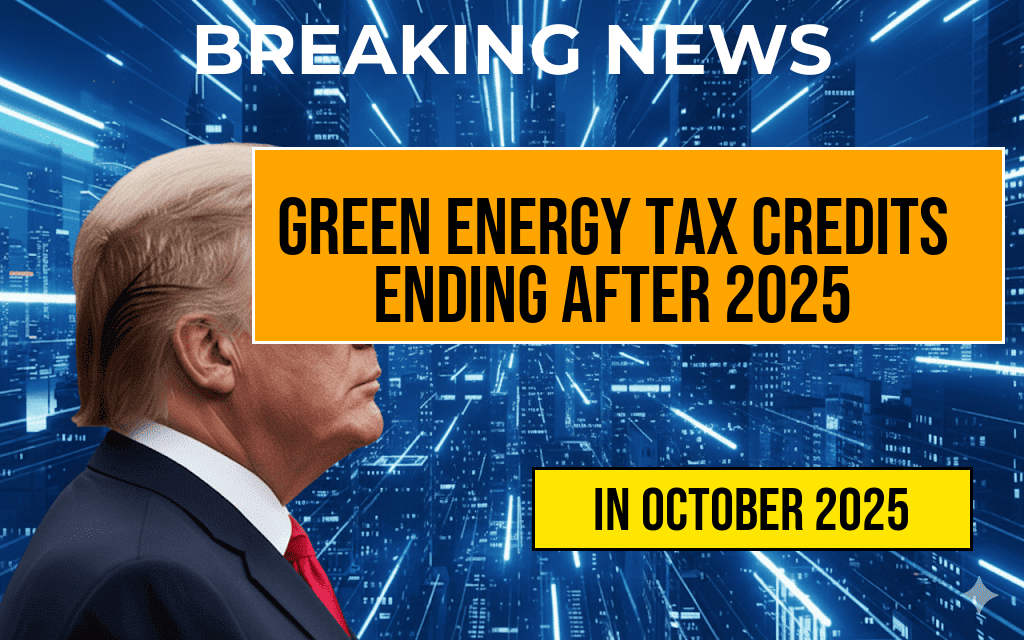As the federal government moves toward encouraging sustainable energy adoption, recent legislative proposals indicate that green energy tax credits could face significant changes after 2025. These incentives, designed to reduce the upfront costs of installing solar panels, heat pumps, and other renewable technologies, have been instrumental in accelerating residential adoption nationwide. However, with current policies set to expire or phase out in the coming years, homeowners contemplating investments in clean energy are facing uncertainty. Understanding the scope of these impending changes, potential alternatives, and strategic planning options is crucial for those seeking to maximize financial benefits while contributing to climate goals.
The Current Landscape of Green Energy Tax Credits
Federal tax incentives for renewable energy projects have historically played a pivotal role in lowering the barrier to entry for homeowners. The most prominent of these, the Investment Tax Credit (ITC), allows eligible individuals to deduct a substantial portion of installation costs from their federal tax liability. For example, the ITC for solar energy initially provided a 30% credit, which has been gradually scheduled to decrease in subsequent years.
In addition to the ITC, the Residential Energy Efficiency Tax Credit and other state-level incentives complement federal programs, fostering a robust environment for renewable upgrades. These programs have led to a surge in residential solar installations, heat pump adoption, and energy storage systems, contributing to national renewable energy targets.
Legislative Developments and Expiration Timeline
Proposed Changes in Federal Policy
Recent legislative proposals, such as the Inflation Reduction Act (IRA) passed in 2022, have extended and expanded certain renewable incentives through 2025. However, many of these provisions are scheduled to sunset or revert to lower levels afterward. Key points include:
- Sunset of the 30% ITC: Currently, homeowners can claim up to 30% of installation costs. This rate is slated to decline to 26% in 2024, then further to 22% in 2025, before potentially ending for residential projects.
- State and local incentives: These vary widely and often depend on federal policies, meaning their availability may also diminish if federal support wanes.
- New policy proposals: Some members of Congress are discussing extensions or modifications, but no definitive legislation has been enacted as of now.
Implications for Homeowners
Once these incentives expire or are reduced, the upfront costs for renewable installations could increase significantly. This scenario may deter some homeowners from proceeding with projects or delay upgrades until incentives are reintroduced or alternative funding sources are identified.
What Homeowners Need to Know
Assessing the Impact of Expiring Credits
| Year | Residential Solar ITC | Other Renewable Incentives |
|---|---|---|
| 2023 | 30% | Available in some states, varies |
| 2024 | 26% | Likely reduced or phased out |
| 2025 | 22% or potentially eliminated | Uncertain; dependent on legislation |
Strategies for Homeowners
- Plan ahead: Consider scheduling installations before credits decline to maximize savings.
- Explore state and local programs: Many states offer rebates or incentives that can offset costs, some of which may be available beyond federal deadlines.
- Consult professionals: Engage with certified renewable energy installers who can provide tailored advice on timing and financing options.
- Review financing options: Loans, leases, and power purchase agreements (PPAs) can reduce initial expenses, regardless of incentives.
Looking Beyond 2025
While current federal incentives face expiration, the push for renewable energy persists. Various policymakers and advocacy groups are advocating for extensions or new incentives to continue promoting clean energy adoption. Additionally, technological advancements are leading to decreasing costs; some experts suggest that even without incentives, the long-term savings on energy bills can justify investments.
Homeowners interested in renewable upgrades should stay informed about legislative developments through reputable sources such as the U.S. Department of Energy or industry news outlets like Forbes. Moreover, consulting with local energy offices can reveal region-specific opportunities that can help bridge the gap as federal incentives evolve.
Resources for Homeowners
- Database of State Incentives for Renewables & Efficiency (DSIRE): https://www.dsireusa.org
- Energy.gov: Homeowner’s Guide to Solar
- Local utility programs: Check with your utility provider for available rebates and financing options
Frequently Asked Questions
What are the upcoming changes to green energy tax credits after 2025?
Starting after 2025, many green energy tax credits are set to expire or be reduced, meaning homeowners may no longer qualify for the same level of financial incentives when installing renewable energy systems.
How will the expiration of green energy tax credits affect my home renewable projects?
The expiration could lead to increased out-of-pocket costs for installing solar panels, wind turbines, or other renewable energy systems, potentially making such projects less financially attractive after 2025.
Is there a way to maximize green energy tax credits before they expire?
Yes, homeowners should consider completing qualifying renewable energy installations before the 2025 deadline to take advantage of current tax incentives and reduce overall costs.
Are there alternative incentives or programs available after the tax credits expire?
Some states and local governments may offer rebates or other incentives for renewable energy projects, so it’s beneficial to explore regional programs that could supplement federal incentives.
What should I do if I want to install renewable energy systems but miss the 2025 deadline?
If you miss the 2025 deadline, you might still benefit from other financial incentives or financing options. Consulting with a renewable energy professional can help you identify the best strategies moving forward.

Leave a Reply